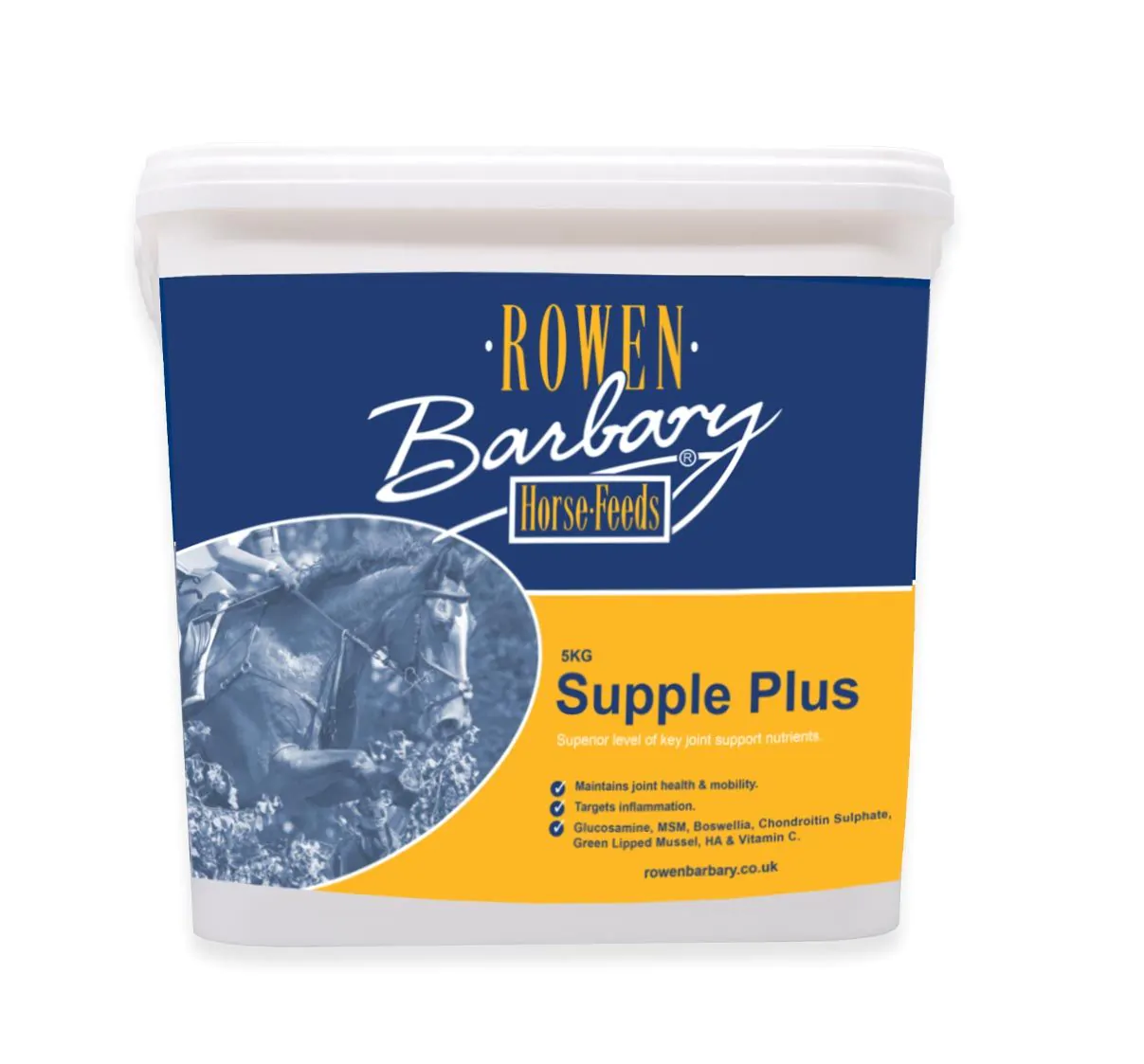- 12th April 2024 by Rowen Barbary
Product Development: Supple Plus
The original joint supplement Rowen Barbary Supple was created in 2013 and compromised of 5 key ingredients including Glucosamine Hydrochloride, MSM, Chondroitin Sulphate, Hyaluronic Acid and Vitamin C.
To offer advance support Rowen Barbary looked at improving the formula. The first stage of the development took place in-house where Boswellia Serrata was fed alongside Supple for a period of 6 months. Noting the improvement to joint health and mobility the second stage of the development was to formulate Supple Plus. At this stage to offer the full benefit it was decided to include both Boswellia Serrata and Green Lipped Mussel in the formula, as both products have been shown to help support the anti-inflammatory process.
14 horses took part in the Supple Plus trial, which included a mixture of breeds at various activity levels. Some participants withdrew during the trial, which resulted in 10 horses being included in the trial for the full 12 weeks.
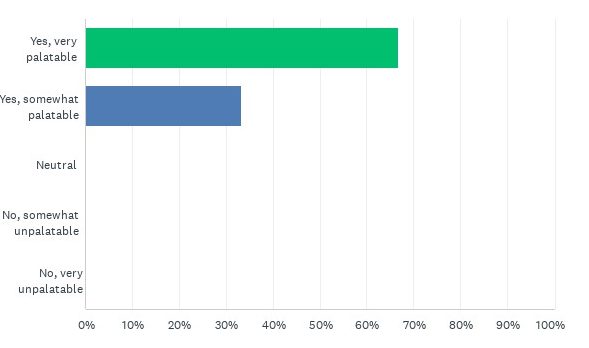 It was noted that some horses preferred the Supple Plus when fed in a very wet mash, while other horses preferred the powder dry, without the addition of any water.
It was noted that some horses preferred the Supple Plus when fed in a very wet mash, while other horses preferred the powder dry, without the addition of any water.
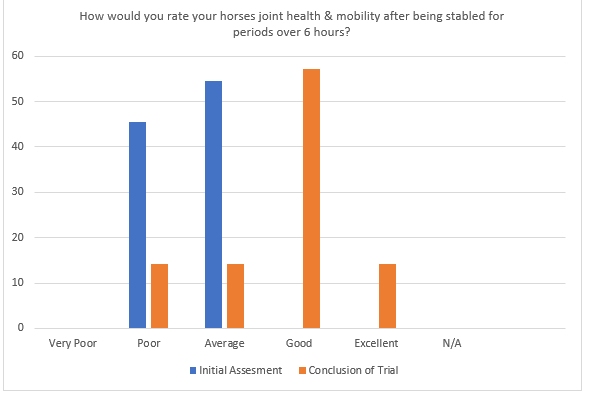

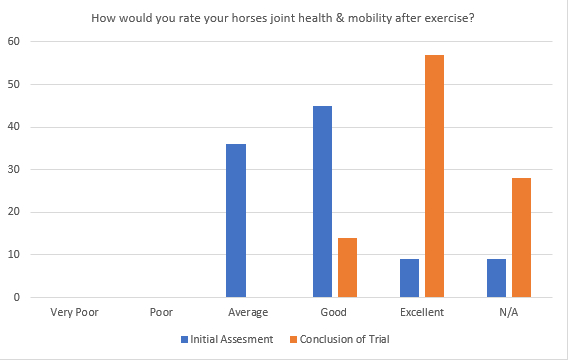
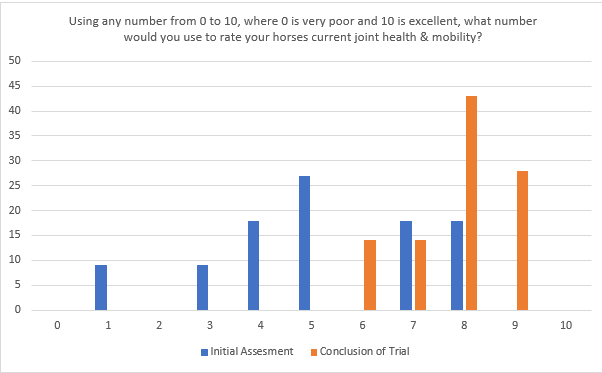
Overview
Included in the Supple Plus trial were various breeds of horses and ponies including 4 x Warmbloods, 3 x Irish Sport Horses, 1 x Connemara and 2 x Thoroughbred X’s. These ranged in age from 8yr to 23yr, with the mean age of the horses included in the Supple Plus trial being 16yrs. They also varied in height with the smallest pony included being 14hh and the largest at 16.3hh In terms of bodyweight 90% of the horses were classed as being in ‘Good’ condition with 10% considered ‘Fat’. Horses taken part in the Supple Plus trial took part in a number of different discipline with the largest proportion at 55% taking part in Eventing, with Jumping, Hacking, Dressage being included, while 18% or the participants were classed as Retired. 64% of the respondents worked their horses 4 – 6 days a week, with 18% working their horses 2 -3 days a week, 9% worked daily and 9% being out of work. With 27% of horses living out and 36% being turned out for over 4 hours this was the most popular amount of time tuned out on grass on a typical day with 18% of horses being restricted and not being turned out at all.Management Practices
During the trial we can see that that the 10% of horses previously classed as ‘Fat’ did lose some weight, as after 12 weeks 100% of respondents now classed their horse to be in ‘Good’ condition. This could be due to seasonal changes, or an increase in workload. Unfortunately, during the course of the trial some of the horses sustained injuries, which had an effect on how often they were worked, as some now required field rest. This meant that after 12 weeks 28% of horses were out of work while 72% now worked 4 – 6 days a week. This saw an increase from the previous 64%. Time out of grass was also increased for all horses during the course of the trial, presumably as we moved into the warmer, dryer months with now 43% of horses involved in the trial now living out 24/7 and the remaining 57% being turned out on grass for over 4 hours a day. Out of the horses included in the trial 18% were under veterinary care, one previously having sustained a SI injury and a DDFT injury, while another had his hocks medicated.Palatability
An important part of any supplement is to make sure it is palatable, and we can see that 66% of the horses involved in the trial found the product ‘Very Palatable’ and 34% found in ‘Somewhat Palatable’ with 0% of horses involved in the trial finding it unpalatable. It was noted that some horses preferred the Supple Plus when fed in a very wet mash, while other horses preferred the powder dry, without the addition of any water.
It was noted that some horses preferred the Supple Plus when fed in a very wet mash, while other horses preferred the powder dry, without the addition of any water.
Assessment
A few different parameters were analyzed over the course of the trial, with the respondents answering a set of questions before the trial began, and then on conclusion of the Supple Plus trial. The first area looked at was how well the respondents rated their horses joint health and mobility after being stabled for a period over 6 horses. Before the Supple Plus trial began we can see how 45% of owners rated their horses joint health as ‘Poor’ while 55% rated their horses joint health as ‘Average’. After 12 weeks this was reviewed with now 14% rating their horses joint health as ‘Poor’, 14% ‘Average’ 57% ‘Good’ and 14% excellent (see table 1).
Table 1. Horses joint health and mobility after being stabled for a period over 6 horses
The second parameter analysed were how horse owners viewed their horses joint health and mobility when first commencing exercise. On this we can see that on the initial assessment 18% of respondents rated their horses as ‘Poor’, 64% ‘Average’ 9% ‘Good’. Following 12 weeks on Supple Plus we can see how the scores greatly improved with now 14% rating their horses as ‘Average’ 71% as ‘Good’. The participants that did not answer wither had horses that were out of work or retired (see table 2).
Table 2: Horses joint health & mobility when first commencing exercise?
The next parameter measured was how well horse owners rated joint health and mobility after exercise. From this we can see that 36% classed their horses joint health to be ‘Average’, 45% ‘Good’ and 9% as ‘Excellent’. Following 12 weeks on Supple Plus we can see how horses owners recognised an improvement with 14% now classed as ‘Good’ and 57% classed as ‘Excellent’. The participants that did not answer wither had horses that were out of work or retired (see table 3).
Table 3: Horses joint health & mobility after exercise
One of the final parameters looked at was asking horses owners to rate their horses joint health and mobility overall out of a score of 10, with ‘0’ classed as ‘Very Poor’ and ‘10’ classed as ‘Excellent’. This question was asked before the trial commenced and again on conclusion of the Supple Plus trial (see table 4).
Table 4: Using any number from 0 to 10, where 0 is very poor and 10 is excellent, what number would you use to rate your horses current joint health & mobility
Overall we can see how horses owners saw an improvement in their horses joint health and mobility during the course of the Supple Plus Trial with the score overall improving 3 marks, from a mean of ‘5’ to an ‘8’.Conclusion
Over 85% of participants noted an improvement in their horses mobility since starting the Supple Plus Trial, with 57% or participants also noting that there horses had improved energy levels, feeling more forward. This resulted in 100% of participants that would be happy to recommend the Supple Plus to other horse owners.We Recommend...



